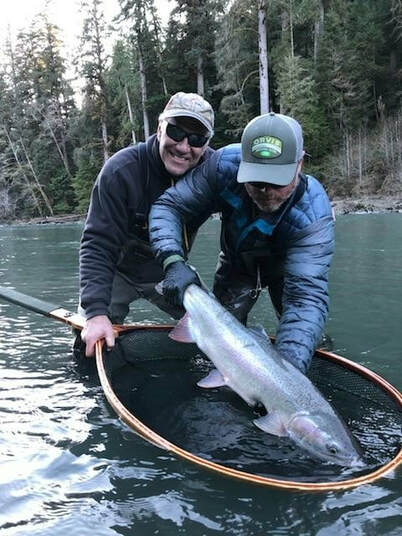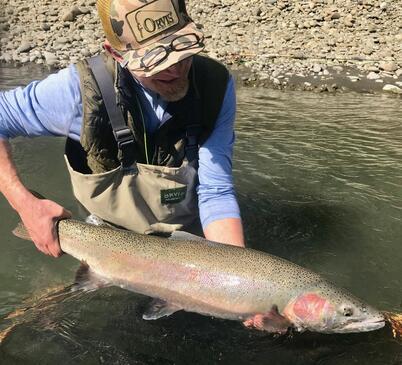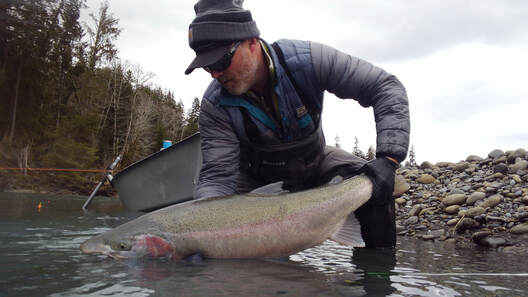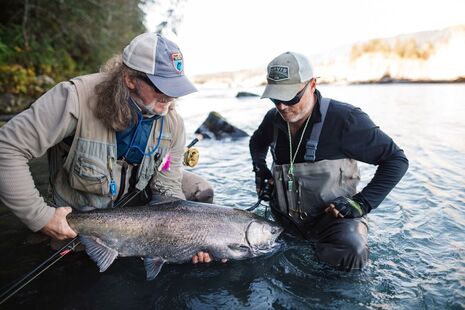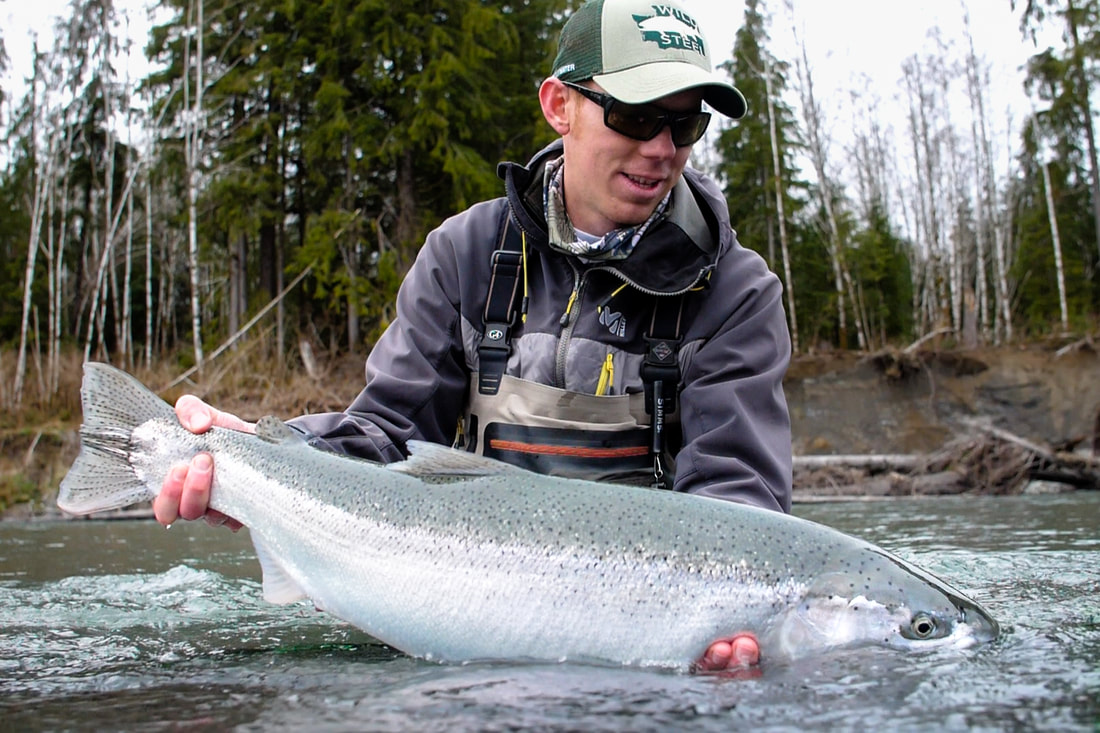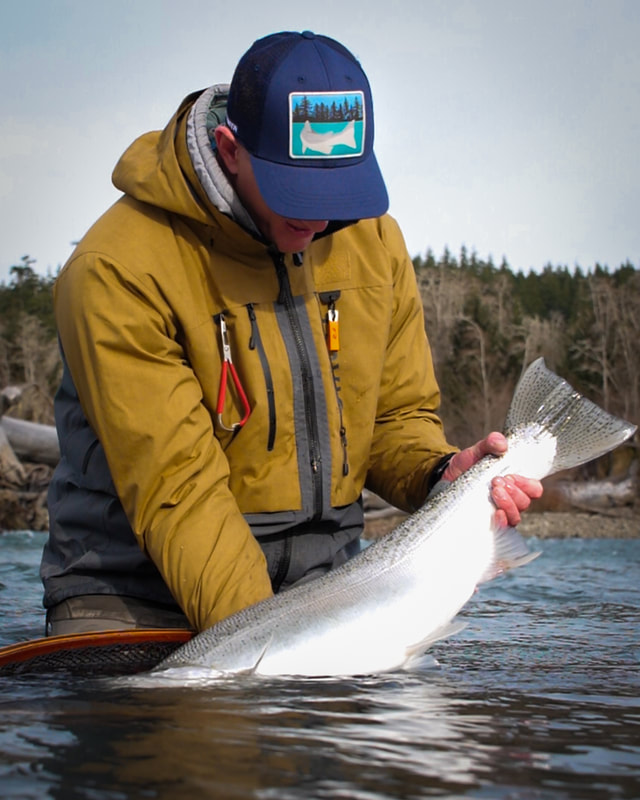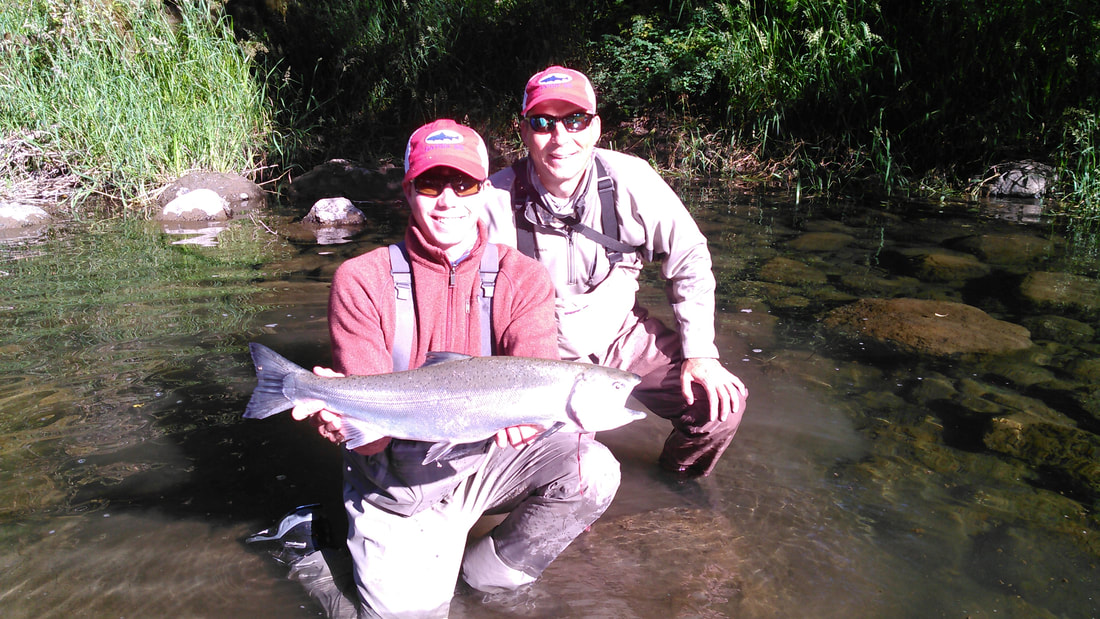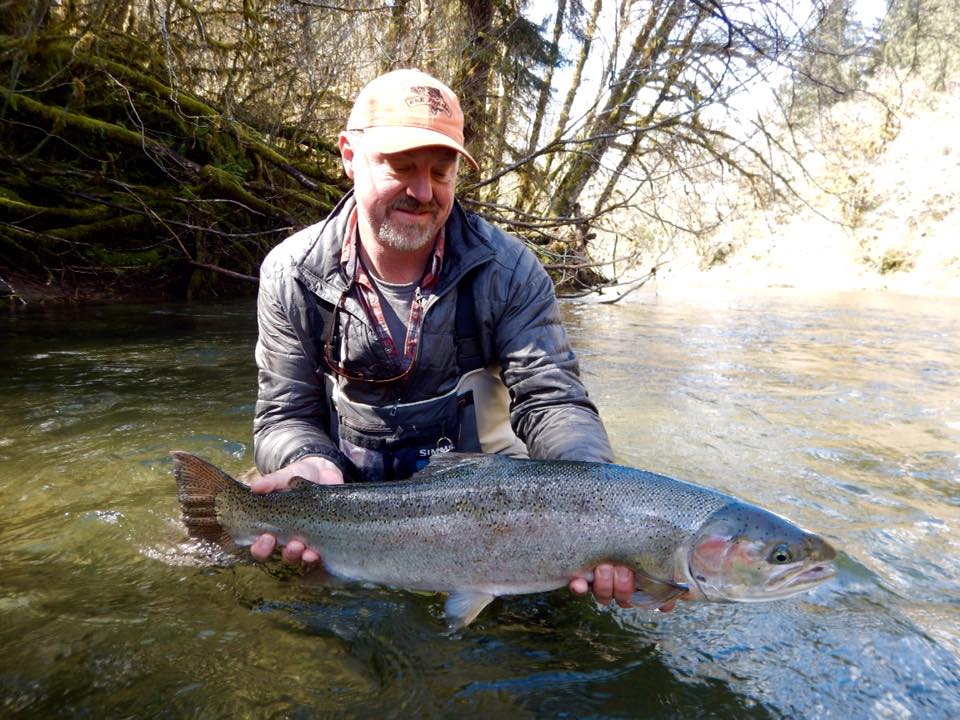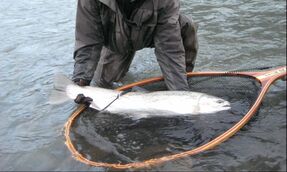The Glacier Rivers
The rivers of the west side OP are all free flowing from mountains in the heart of Olympic National Park to the Pacific ocean. Most are no more than 50 miles long which is why they tolerate the abundance of rainfall that we receive annually. The Queets, Quinault and Hoh rivers are large glacier fed systems and produce some of the largest Steelhead and Salmon on the west coast. They have that magical glacier green color when conditions are right and that's what draws anglers from around the globe to pursue the fish that call them home. Each passing storm changes the character and course of the river providing a new challenge for anglers.
|
Queets River
This is the most untouched river on the peninsula. Fishing the Queets during winter months is really hit or miss. I'm not speaking to whether fish are there or biting, but how often it's actually fishable...rarely comes to mind. This is the largest drainage on the west slope of the Olympics and it is the first to go out of shape because of it and the last river to also return to shape because of the abundance of volcanic clay on it's banks. These create serious discoloration issues often looking more like liquid concrete than a glacially fed river. It's also entirely within Olympic National Park or reservation in the lower few miles so guiding is very limited and few recreational anglers are willing to deal with the long shuttle to float it. Lined by ancient old growth forests it tends to not change significantly from flooding, that being said when it does decide to change course it can be dramatic, forming some of the largest log jambs you'll likely ever see. Flows can fluctuate massively within 24 hours...5,000 cfs to 80,000+ cfs for instance is not uncommon. Some very large salmon during fall months, chinook to 50 lbs. and coho up to 20 lbs. are not uncommon, and 40"+ steelhead call these waters home during winter and spring. In fact two of the largest steelhead I've ever seen were on the Queets. When there's an opportunity to fish the Queets it's about quality, not quantity most days. These fish fight brutally hard, with strong currents and obstructions to avoid. I'd take that shot every time for the fish of a lifetime. If there is a "holy water" on the OP, and you believe in that sort of thing, this is the "mecca"! Some anglers have tried for years to hit this river when it's "On!". |
|
Hoh River
By far the most popular river in the Olympics, and for good reason. For the fly angler it has the most fishable water of all the glacial rivers, with consistent depths and tons of walk in access. There's also nearly 30 miles of floatable water. There are no improved boat launches however, so launch points can be an adventure and vary from year to year and flooding events. It has good returns of large chinook and coho salmon and very large steelhead as well. It's typically fishable three to four days after a high water event, clearing up reasonably quick. It can see a fair amount of angler pressure particularly during March and April, when the spey angler crowd arrives in mass from around the world to ply it's waters. Most all of the national park water is walk in access and designated fly only, so pressure is minimal there. This river during summer months sees the strongest diurnal cycle, color phasing, of any of the glacier rivers with the bulk of it's flow originating on the mountain. When temps are warm it's gains a lot of color and when it cools it clears so picking the right day and zone to fish during summer months is critical. |
|
Quinault River
Of the glacier rivers of the peninsula this is an anomaly, a large natural lake separates the upper river accessible to the public and the lower river which is entirely within the Quinault reservation. To fish the lower river requires hiring a tribal guide. The upper river is fairly short, about eight river miles to the North and East Fork confluence, with minimal and difficult access by boat. Walk in access is easiest in the upper stretches with the road being reasonably close to the north and south shore roads. Native sockeye, chinook and coho are present. Steelhead have declined here for numerous reasons including problems from hatchery fish integration, loss of the Anderson Glacier decreasing summer flows in the East Fork, and dramatic flooding events to name a few. The upper river clears very quickly after high water events, generally two days, and does still produce some very large steelhead. Much of my early OP years were spent plying these waters for it's incredible fish... |
The Spring Fed Rivers
There are numerous spring fed rivers on the north coast, including the Sol Duc, Calawah, Bogachiel, Clearwater and some lesser known rivers including the Lyre, Physt, Hoko and Sekui Rivers to name a few. These rivers tend to be very stable, not changing significantly from year to year, but they do vary dramatically in character. From steep bedrock systems like the Sol Duc and Calawah with technical white water floats to large alluvial systems like the Bogachiel and Quillayute to small lowland coastal rivers like the Dickey, Hoko and Physt. Picking the right river based upon run timing and conditions is key.
Sol DucWith the most fishable and floatable miles of any river on the OP it's no wonder why it produces so man salmon and steelhead year after year. It's a bedrock river so it changes very little year to year and is one of the first river to come back into shape after a storm. It does however, have some of the most technical floats on the peninsula so it's important to know your water before attempting to float this river. It consistently produces one of the strongest Coho salmon runs on the entire north coast. There are two salmon hatcheries on the Sol Duc, a state operated and a tribal hatchery.
|
CalawahThe Calawah is also a bedrock river and changes little, but also has a reputation for being dangerous and for good reason, its a boat eater! This is far and away the most technical river on the coast. Knowing the ins and outs of each rapid is critical so you don't wind up at a dead end or worse. It also produces a lot of Steelhead, both wild and hatchery fish. It's usually back in shape and fishable 48 hours after a big storm so it's one of the first options when we get blown out and because of it's reputation doesn't get a lot of pressure. In summer months it's generally un-floatable.
|
BogachielThe "Bogi" has the most access of any river on the north coast with three improved boat ramps, a rarity on the OP, and numerous un-improved launch points. It has very little technical water and produces a ton of Steelhead, Salmon and Trout. Because of landslide activity over the past few years the upper stretches of the river, above the Calawah confluence, doesn't see nearly as many "fishable" days during winter months. It has the only state operated Steelhead hatchery of the local rivers and see's summer and winter Steelhead as well as good runs of Coho and Chinook. Because of everything noted above it also see's the most angler pressure.
|
